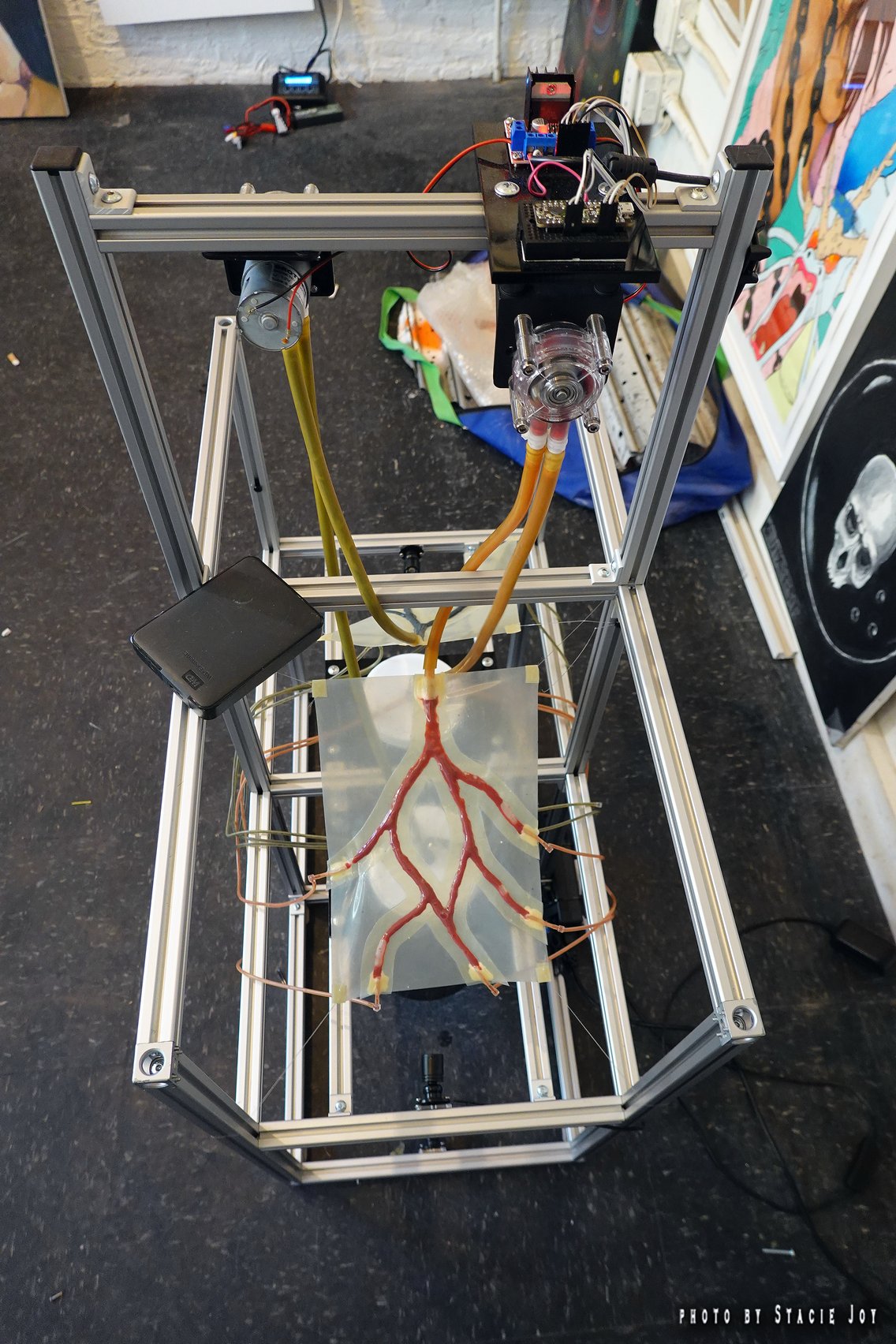Abiotic Sphygmology
2022
latex, aluminum, electronics, water, paint
1' x 2' x 3'
Abiotic Sphygmology is a kinetic sculpture exploring the concept of aliveness. By imbuing non-living, human-made materials like latex and aluminum with life-like characteristics – in this case a pulse – this sculpture asks viewers to explore the boundary between what is alive and what is not.









Abiotic: a non-living physical attribute of a system
Sphygmology: the study of the pulse
The study of the pulse as an indicator of health, or sphygmology, has been around since 2500 BC. First practiced in ancient China and India, sphygmology was only loosely based on clinical knowledge of the body. It was more an art of interpretation than anything else and granted the practitioner the ability to diagnose a variety of maladies as well as thought to predict a patient’s death up to 30 years in advance. As knowledge of the pulse developed in pace with a growing knowledge of the human body, Eastern and Western sphygmology practices became increasingly useful in healthcare. Today, the pulse and blood pressure are key metrics of wellness and vitality.
But what does it mean to study the pulse of something which is not alive? In colloquial English, to “take the pulse” is to ascertain the mood, or form an opinion of the situation at hand. What does a sphygmology of the contemporary relationship with the natural world look like, given our current understanding of aliveness?
From the perspective of psychologists and neurologists, distinguishing between the living and the non-living is a core, evolutionary function of the human brain. This deeply ingrained, intuitive impulse for differentiation has kept us alive for millennia. Increasingly, however, the line between the living and the non-living is harder to draw – many long held characteristics of human, plant, and animal life are no longer strictly synonymous with the living. What does it mean to be alive in an age where machines speak fluently and move like the monsters of our dreams? How can we delve deeper into the shifting relationship between the natural world and what is, or has been, alive?
(funny mention in the NYT)
